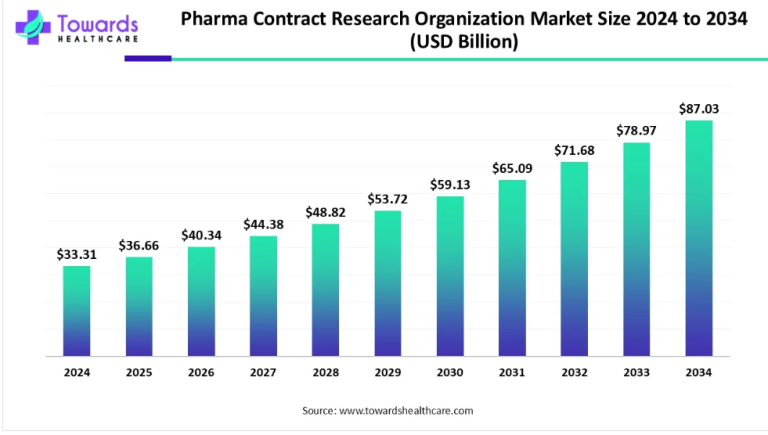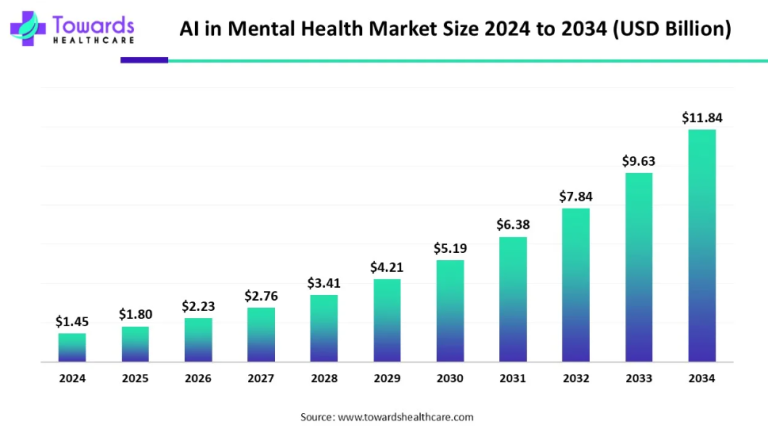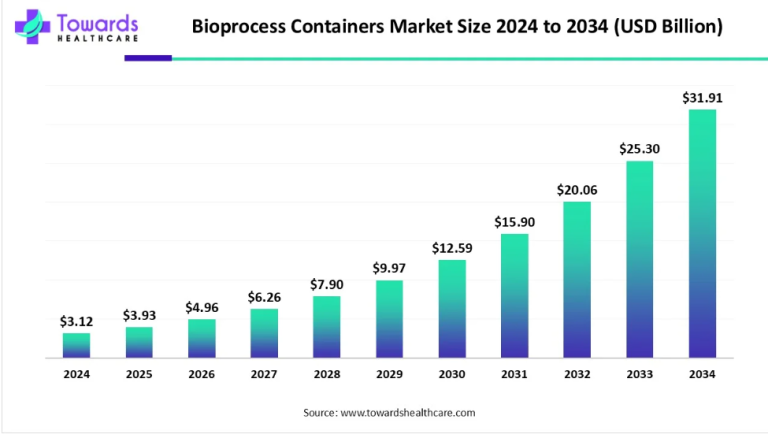In an era where ensuring the safety and security of our food supply is paramount, the global animal vaccine market is poised for remarkable expansion. Anticipated to surge from USD 14.27 billion in 2022, a robust growth of 10% CAGR (2023-2032) is expected to propel the market to a staggering estimated value of USD 36.91 billion by 2032.
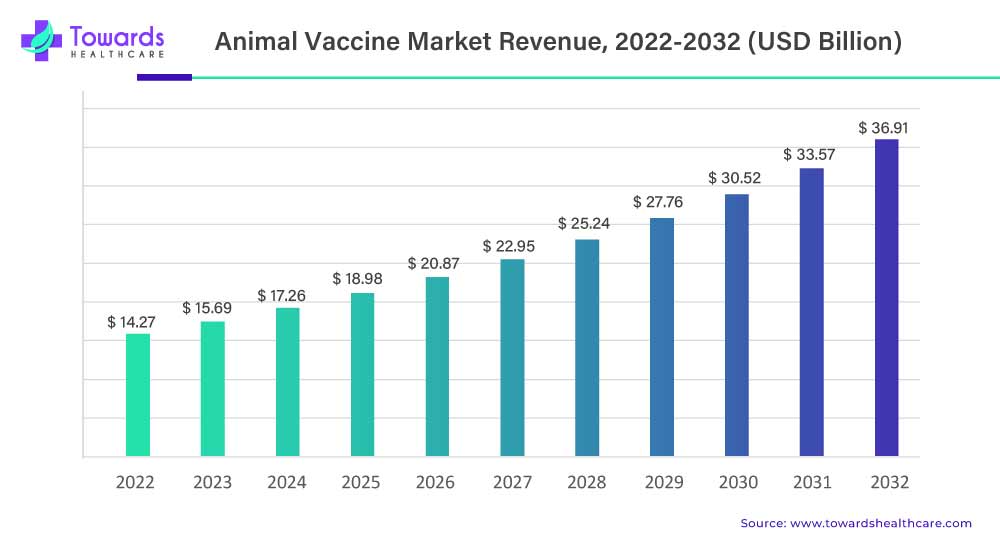
An estimated 75% of newly emerging infectious diseases in humans have their roots in animals, highlighting the strong connection between animal and human health.
The animal vaccine market is a rapidly growing sector within the healthcare industry. Animal vaccines play a vital role in preventing and controlling infectious diseases in animals, thus ensuring their health and well-being. The market encompasses vaccines for various animal species, including livestock, companion animals, and poultry.
The global demand for animal vaccine market is driven by several factors. The increasing prevalence of zoonotic diseases and the need to protect human health have driven a greater emphasis on animal vaccination, as it helps prevent the transmission of zoonotic diseases from animals to humans and reduces the associated public health risks. Furthermore, the growing global population and rising disposable incomes have led to an increased demand for animal-derived products, such as meat, milk, and eggs. To meet the growing demand, livestock producers are adopting preventive healthcare measures, including vaccination, to ensure the health and productivity of their animals. This drives the demand for animal vaccines.
Another trend observed in the animal vaccine market is the increasing focus on companion animal health. Pet owners are increasingly investing in preventive healthcare for their pets, including routine vaccination. This trend is driven by the rising awareness about the benefits of vaccination in preventing infectious diseases and improving the overall well-being of companion animals.
The Role of Technological Advancements and Innovative Vaccines
Technological advancements and the development of innovative vaccines are major drivers in the animal vaccine market. The field of veterinary immunology and vaccine research has witnessed significant progress in recent years, leading to the introduction of novel vaccines with enhanced efficacy and safety profiles.
Advances in biotechnology and genetic engineering have revolutionized vaccine development. Recombinant DNA technology has enabled the production of recombinant vaccines, which are safer and more effective than traditional vaccines. These vaccines utilize specific antigens or proteins of the pathogen, eliminating the need for whole-pathogen components. Recombinant vaccines offer improved immune response, reduced side effects, and increased protection against targeted diseases.
In addition, the use of adjuvants in vaccine formulations has improved the efficacy of animal vaccine market. Adjuvants enhance the immune response to the vaccine, resulting in better protection against infectious agents. The development of novel adjuvants, such as immune-stimulating complexes and toll-like receptor agonists, has contributed to the effectiveness of vaccines in animals. In June 2022, the Union Minister of Agriculture & Farmers’ Welfare, in India unveiled a range of Animal Vaccines and Diagnostic Kits developed by the ICAR-National Research Centre on Equines in Hisar, Haryana.
Among them is the Ancovax Vaccine, an innovative inactivated SARS-CoV-2 Delta (COVID-19) Vaccine for Animals. This groundbreaking vaccine utilizes an adjuvant called Alhydrogel and induces immunity that effectively neutralizes both the Delta and Omicron Variants of SARS-CoV-2.
Furthermore, advancements in vaccine delivery systems have facilitated efficient and targeted vaccine administration. Needle-free delivery methods, such as oral vaccines and intranasal sprays, offer convenience and ease of use. These non-invasive delivery systems reduce stress on animals and improve compliance among livestock producers and pet owners.
The development of vaccines for emerging and re-emerging diseases is another important aspect of technological advancements in the animal vaccine market. Diseases such as African swine fever, bovine respiratory syncytial virus, and new strains of avian influenza pose significant threats to animal health and the livestock industry. Rapid identification of emerging pathogens and the development of vaccines to prevent their spread are critical for disease control and containment.
The Role of Increasing Focus on Food Safety and Security
The increasing focus on food safety and security is a major driver in the animal vaccine market. With the growing global population and the rising demand for animal-derived products, ensuring the safety and quality of food products has become paramount. Approximately 60% of human disease-causing pathogens can be traced back to domestic animals or wildlife, highlighting their significant role as sources of infectious agents. Outbreaks of foodborne diseases associated with animal products, such as salmonella and campylobacter infections, have raised concerns among consumers and regulatory authorities.
Vaccination of animals against pathogens that can contaminate food products helps reduce the risk of foodborne illnesses. Livestock producers and poultry farmers are increasingly implementing vaccination programs to safeguard the health of their animals and ensure the safety of the food supply chain.
Furthermore, stringent regulations and quality standards imposed by regulatory bodies, such as the World Organization for Animal Health (OIE) and the Food and Agriculture Organization (FAO), drive the adoption of vaccination practices. Compliance with these regulations is essential for international trade in animal products. Vaccination against specific diseases is often a prerequisite for exporting animal products to certain countries, ensuring market access and boosting trade opportunities. The focus on food security is another driver for animal vaccination.
Disease outbreaks can significantly impact livestock production and food availability, leading to economic losses and food shortages. Vaccination programs help control and prevent the spread of diseases, thereby safeguarding livestock populations and ensuring a stable supply of animal-derived products.
Moreover, consumer awareness and demand for safe and responsibly sourced animal products have increased. Consumers are more conscious of the potential health risks associated with consuming products from animals that have not been vaccinated. This has prompted livestock producers to prioritize vaccination as part of their animal welfare and food safety practices, meeting consumer expectations and enhancing market competitiveness.
The Impact of High Costs and Storage Challenges
High costs associated with animal vaccine market and storage challenges pose significant restraints to the animal vaccine market. Vaccines are complex biological products that require extensive research, development, and manufacturing processes. These factors contribute to the high production costs of animal vaccines. The costs associated with vaccine development, clinical trials, regulatory approvals, and manufacturing scale-up are substantial. The need for specialized facilities, equipment, and expertise further adds to the expenses. These high costs impact the affordability and accessibility of animal vaccines, especially in developing countries and small-scale farming operations.
Storage challenges also present a significant restraint to the animal vaccine market. Many vaccines require strict temperature control and proper storage conditions to maintain their potency and efficacy. Cold chain management is crucial to prevent vaccine degradation and maintain immunogenicity. However, maintaining an uninterrupted cold chain throughout the vaccine distribution network can be challenging, particularly in remote areas with limited infrastructure and unreliable electricity supply. Inadequate storage facilities and temperature fluctuations can lead to vaccine spoilage, rendering them ineffective.
Furthermore, the logistics involved in cold chain management, including transportation, monitoring, and quality control, add complexity and costs to the vaccine distribution process. These challenges impact the availability and efficacy of vaccines, hindering their widespread use in certain regions and among small-scale farmers. Despite these restraints, market players are working on developing thermostable vaccines and implementing innovative storage solutions to overcome the limitations associated with cold chain requirements. These advancements would significantly enhance vaccine accessibility and address the storage challenges in the animal vaccine market.
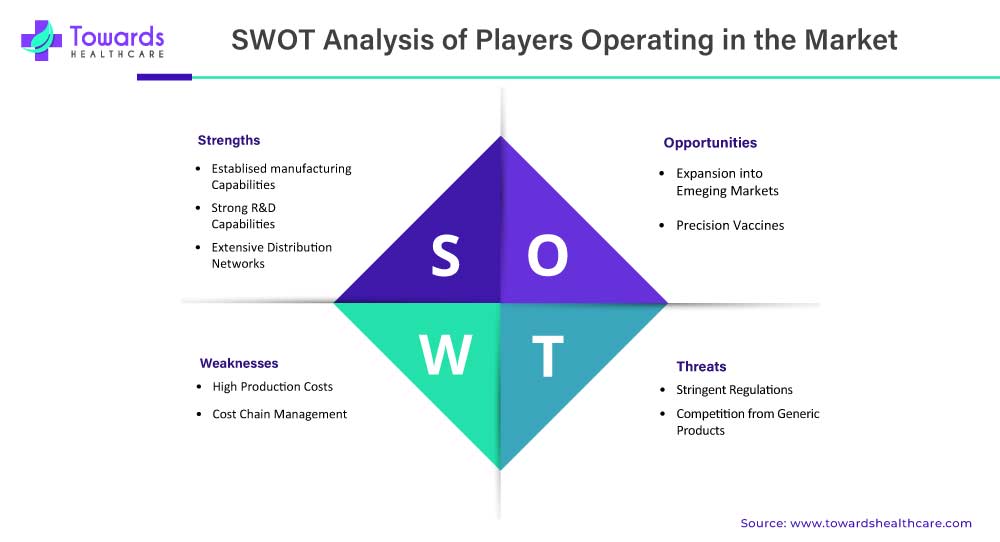
Strengths:
- Several key players in the animal vaccine market have well-established manufacturing facilities and expertise in vaccine production, ensuring a reliable supply of high-quality vaccines.
- Market players invest significantly in research and development activities to develop innovative vaccines and address emerging disease challenges.
- Established market players have extensive distribution networks that allow them to reach a wide customer base, including veterinary clinics, livestock producers, and government agencies.
Weaknesses:
- The development, production, and regulatory approval processes for animal vaccines are expensive, posing challenges for small and medium-sized market players with limited financial resources.
- The requirement for cold chain storage and transportation poses logistical challenges and can increase costs, especially in regions with inadequate infrastructure.
Opportunities:
- Market players can capitalize on the growing demand for animal vaccines in emerging markets, such as the Asia Pacific and Latin America regions, by expanding their presence and product offerings.
- The increasing adoption of precision vaccines presents an opportunity to develop customized and targeted vaccine solutions, meeting the specific needs of different animal populations.
Threats:
- The animal vaccine market is subject to stringent regulatory requirements, including safety and efficacy evaluations. Compliance with these regulations can be time-consuming and costly.
- The entry of generic vaccine manufacturers and the availability of low-cost alternatives pose a threat to market players, particularly in price-sensitive markets.
Regional Landscape of the Animal Vaccine Market
North America is a prominent for animal vaccine market, with the United States holding the largest market share in the region. The region’s dominance can be attributed to several factors. The United States has a well-established veterinary healthcare infrastructure and a robust regulatory framework governing animal health. The country’s advanced veterinary research facilities and academic institutions drive innovation and the development of new vaccines. The presence of major pharmaceutical companies and biotechnology firms focused on animal health further contributes to the growth of the market.
In terms of livestock production, the United States is one of the world’s leading producers of meat and dairy products. The demand for vaccines to ensure the health and productivity of livestock is high. Additionally, pet ownership is widespread in the United States, with a significant focus on companion animal health. This drives the demand for vaccines for pets, including dogs, cats, and horses.
Canada is another significant market for animal vaccines in North America. The country’s large livestock industry, particularly in sectors such as beef and poultry, contributes to the demand for vaccines. Canada also has a strong research and development ecosystem, supporting advancements in animal vaccine market technology.
In the upcoming years, the Asia Pacific region is projected to witness the fastest growth in the animal vaccine market. World Organization for Animal Health delivered around 27.5 million doses of rabies vaccine to countries in Asia and Africa, reported as of April 2023. In addition to this, 8.1 million mouth and foot disease vaccines and 91.6 million peste des petits ruminants vaccine doses were also delivered in Asian and African countries
The region’s growing population, rapid urbanization, and increasing disposable incomes are driving the demand for animal-derived products. This, in turn, creates a need for vaccination programs to ensure the health and productivity of livestock.
Additionally, governments in countries such as China and India are focusing on strengthening their veterinary healthcare infrastructure and implementing disease control measures. The rising awareness about animal health, zoonotic diseases, and food safety further fuels the demand for animal vaccine markets in the region. Market players should capitalize on the opportunities presented by the growing Asia Pacific market by expanding their product offerings and establishing strategic partnerships with local stakeholders.
Increasing Adoption of Precision Vaccines
The increasing adoption of precision vaccines represents a major opportunity in the animal vaccine market. Precision vaccines, or stratified or individualized vaccines, are tailored to specific animal populations based on age, breed, immune status, and disease prevalence. Precision vaccines offer several advantages over traditional mass vaccination approaches. They enable targeted protection against specific diseases prevalent in particular regions or production systems, optimizing vaccine efficacy and cost-effectiveness. By considering the unique characteristics of animal populations, precision vaccines help minimize unnecessary vaccinations and reduce the risk of adverse reactions.
Furthermore, precision vaccines can be customized to address the emerging and evolving challenges in animal health. Rapid diagnostics, genetic sequencing, and data analytics enable the identification of specific pathogens and their variants. This information guides the development of precision vaccines that effectively target the identified pathogens and provide tailored protection. Precision vaccines also support the concept of responsible antimicrobial use. By reducing the reliance on antimicrobial agents, precision vaccination contributes to the global efforts to combat antimicrobial resistance and preserve the effectiveness of antibiotics.
The increasing availability of advanced diagnostic tools and technologies, such as next-generation sequencing and serological profiling, further facilitates the development and deployment of precision vaccines. These tools enable veterinarians and researchers to assess the immune status of animals and identify the most suitable vaccines for specific individuals or herds. The adoption of precision vaccines is expected to grow significantly as livestock producers and veterinary professionals recognize the benefits of targeted vaccination strategies. Market players should invest in research and development to expand the range of precision vaccines available for different animal species and diseases.
Additionally, collaborations with diagnostic companies and technology providers can help integrate diagnostics and vaccine development, offering comprehensive solutions to the market.
Safeguarding Food Sources: A Driving Force
Unveiling the Growth Potential
The growth of the animal vaccine market is intricately linked to the escalating emphasis on food safety. As the global population burgeons, ensuring the well-being of livestock becomes indispensable. This, in turn, necessitates a heightened focus on disease prevention, thereby driving the demand for advanced animal vaccine market.
Charting the Course to 2032
Projections indicate a compelling trajectory for the market, with a compound annual growth rate (CAGR) of 10% earmarked for the period from 2023 to 2032. This substantial growth is a testament to the industry’s resilience and adaptability in addressing the evolving challenges in animal health.
Key Catalysts Igniting Market Expansion
Technological Advancements Redefining the Landscape
The integration of cutting-edge technologies in vaccine development is a pivotal factor fueling market growth. Innovations such as precision medicine and genetic engineering are revolutionizing the effectiveness of vaccines, thereby bolstering their adoption across the agricultural landscape.
Regulatory Support: A Pillar of Strength
A conducive regulatory environment plays a pivotal role in fostering market expansion. Governments worldwide are recognizing the significance of animal health in the larger context of food security, prompting supportive policies and regulatory frameworks that facilitate the development and distribution of advanced animal vaccine markets.
The Road Ahead: Opportunities and Challenges
Opportunities Abound in Emerging Economies
As economies in Asia, Latin America, and Africa witness rapid agricultural expansion, untapped opportunities for the animal vaccine market emerge. Strategic investments in these regions could unlock new avenues for growth and establish a robust presence in burgeoning markets.
Navigating Challenges for Sustained Growth
While the trajectory is promising, challenges persist. Issues such as vaccine storage and distribution logistics, as well as public awareness, pose hurdles to seamless market expansion. Addressing these challenges head-on will be instrumental in sustaining the upward trajectory of the animal vaccine market.
Market Segments:
By Product Type
- Attenuated Live Vaccines
- Inactivated Vaccines
- Subunit Vaccines
- DN+A Vaccines
- Recombinant Vaccines
By Animal Type
- Livestock
- Poultry
- Aqua
- Ruminants
- Swine
- Companion
- Canine
- Feline
By Route of Administration
- Subcutaneous
- Intramuscular
- Intranasal
By End User
- Hospital
- Clinics
By Geography
- North America
- Europe
- Asia-Pacific
- Latin America
- Middle East and Africa
Conclusion: A Thriving Landscape
In conclusion, the global animal vaccine market is not merely a segment of the pharmaceutical industry but a critical contributor to global food security. With an estimated value of USD 36.91 billion by 2032, the market is on an upward trajectory fueled by technological innovations, regulatory support, and a growing awareness of the pivotal role it plays in safeguarding our food sources. As we navigate the path to 2032, opportunities abound, and challenges pave the way for innovation and resilience in this dynamic landscape.
